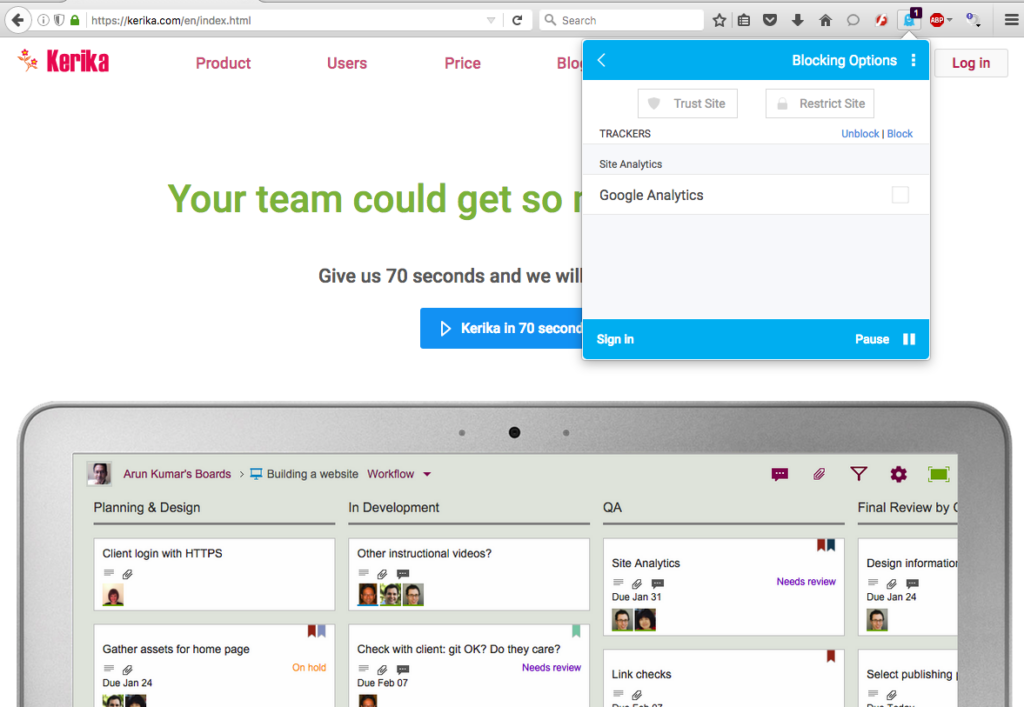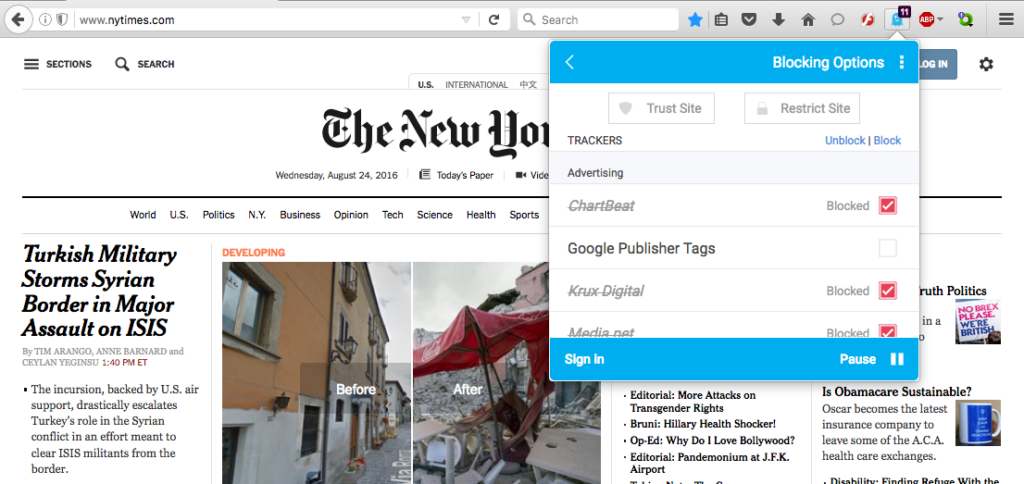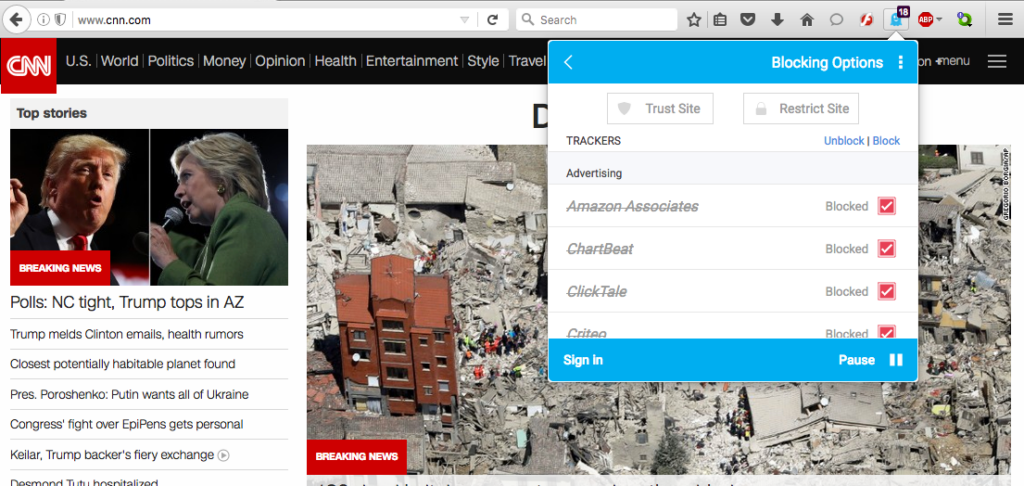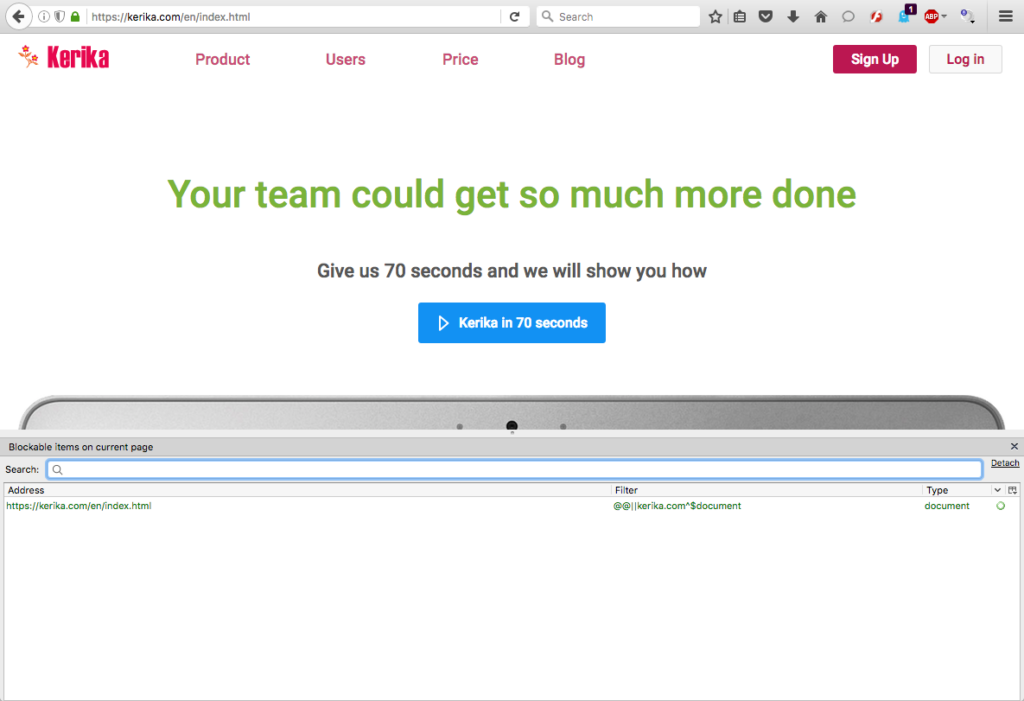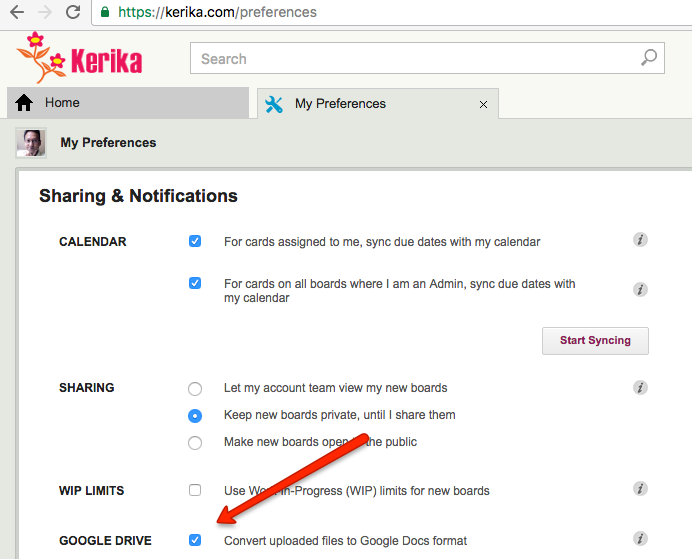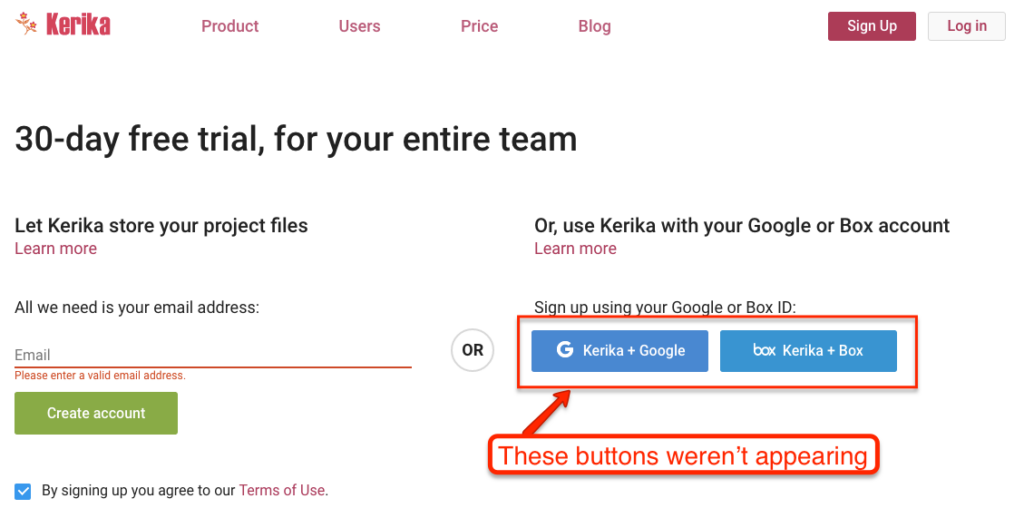We offer three ways for you to sign up as a Kerika user:
- Using a Google ID, e.g. a Gmail address if you have one.
- Using a Box ID, if you are a Box user.
- Signing up directly.
Using a Google ID means you are getting Kerika+Google: the version of Kerika that offers amazingly smooth integration with your Google Drive and Google Docs.
Using a Box ID means that you are getting Kerika+Box: the version that offers amazingly smooth integration with the Box platform.
And signing up directly means that you can use any email address you like, and leave it to Kerika to store your files for you.
Originally, we had just Kerika+Google, and then we built Kerika+Box to address the market for enterprises that preferred using Box to Google.
And, finally, we built the direct login method for people who didn’t care about how their Kerika files were stored, and were happy to just leave that whole job for us to take care of.
We are now trying to streamline that process even further.
If you already have a Gmail address, it is very likely that you are already comfortable with using Google’s services, which means you should really be getting a Kerika+Google account so that you can benefit from all the great, smooth integration we have already done.
In the same vein, if the majority of people from your company have already signed up for a particular service, e.g. Kerika+Box or Kerika+Google, then it makes sense for you to sign up in the same way so that you can share boards with your coworkers.
This process is now more automated, and, we hope, simpler: when you sign up, we look at the email address you are using to set up your Kerika account and try to set you up with the version of Kerika that will make most sense:
- If you are signing up with a Gmail address, we are going to set you up with Kerika+Google.
- If most people from your company have already signed up for Kerika+Box, or Kerika+Google, we will set you up the same way as well.
This should make for less confusion about which flavor of Kerika is going to be tastiest for you…
